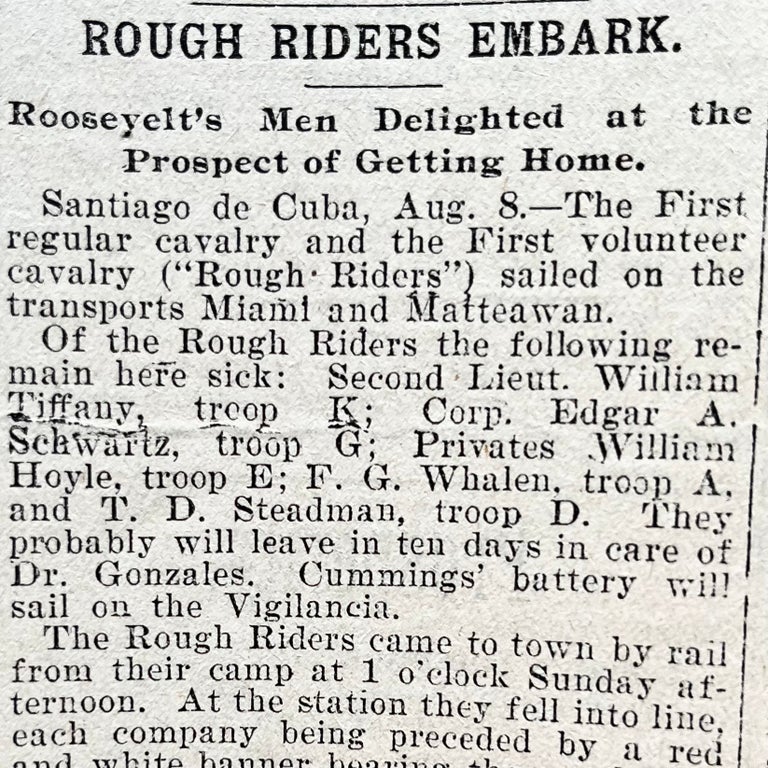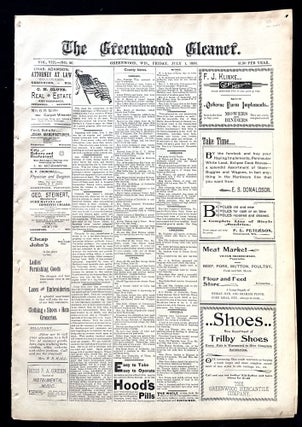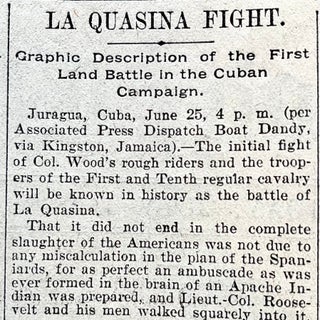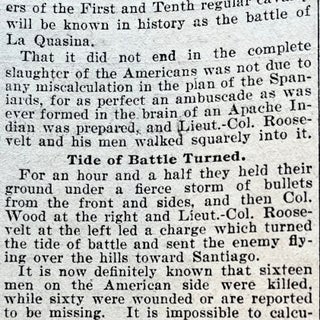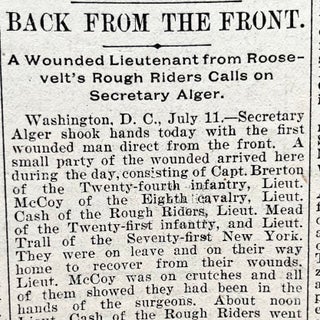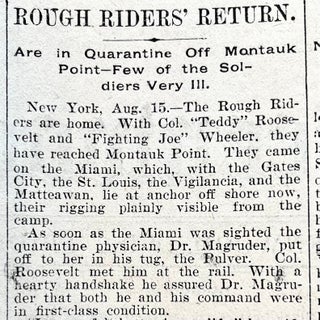Four 1898 newspapers with First Hand Accounts of Teddy Roosevelt, the Rough Riders & San Juan Hill
Greenwood, WI: The Greenwood (Wisconsin) Gleaner, 1898. 1st Edition. Very Good. Item #15651
This lot of four 1898 issues of the Greenwood Gleaner newspaper contain inside-page headline reports of the formation of the Rough Riders through Teddy Roosevelt's famed charge with his celebrated band up San Juan Hill during the Siege of Santiago.
These four issues are each complete in eight pages and also feature local news and advertising from turn-of-the-century Wisconsin.
"The Battle of San Juan Hill, also known as the Battle for the San Juan Heights, was a major battle of the Spanish–American War fought between an American force under the command of William Rufus Shafter and Joseph Wheeler against a Spanish force led by Arsenio Linares y Pombo. The battle proved to be one of the most significant battles of the war and, along with the Siege of Santiago, a decisive battle in deciding the fate of the United States Army campaign in Cuba. The American forces, outnumbering the Spanish defenders 16-to-one, charged upon the heights and dispersed the Spanish after suffering heavy casualties.
Tensions between Spain and the United States worsened over Spanish behavior during their efforts to quell the Cuban War of Independence, with many Americans being agitated by exaggerated reports of Spanish atrocities against the Cuban population. In January 1898, fearing the fate of American interests in Cuba due to the war, the cruiser USS Maine was dispatched to protect them. Less than a month later, the cruiser exploded while lying at anchor in Havana harbor, killing 261 sailors onboard and inflaming American opinion, with Spain being portrayed as the culprit in the American media without conclusive evidence. Two months later, war was declared.
The Americans, after already landing troops in the Battle of Guantánamo Bay, moved inland to seek a decisive encounter with the Spanish forces. Both sides drew blood at the Battle of Las Guasimas, with the Spanish moving to defend the strategically valuable San Juan Heights from the Americans. A week later, a significantly larger American force, including the famed 'Rough Riders', moved to clear the heights of the Spanish. After enduring artillery fire which inflicted heavy casualties, the Americans charged up the hill and dispersed the Spanish, suffering even more heavily in the process. The fight for the heights proved to be the bloodiest and most famous battle of the war.
The battle also proved to be the location of the "greatest victory" for the Rough Riders, as stated by the press and its new commander, Theodore Roosevelt, who eventually became vice president and later president of the United States, and who was posthumously awarded the Medal of Honor in 2001 for his actions in Cuba and became the only U.S. president to receive the award. The Americans won another engagement at El Caney the same day, with both battles highlighting the bravery and skill of the American/Cuban forces, as well as the Spanish defenders. Following the surrender of the Spanish army at Santiago, they agreed to depart Cuba, ending over four centuries of Spanish rule." - Wiki
These issues are in Very Good condition with mild age toning. Disbound.
#1A-012.
Price: $65.00

